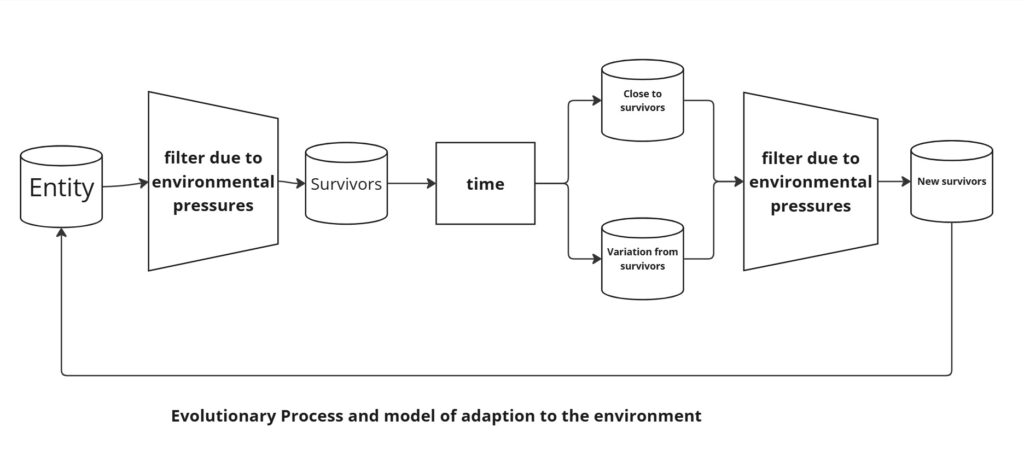
Understanding the first principles behind every living creature on Earth shows us exactly why nature chooses each form and function.
Sometimes these insights reveal bizarre, unexpected answers.
Other times, the principles are so obvious we wonder how we missed them.
That’s why we can’t just dabble in superficial biomimicry.
We have to be as effective as evolution itself—rather than merely copying it.
Evolution moves in a way that’s elegantly unique, navigating every obstacle nature throws.
The fact that life still exists proves evolution knows how to sustain itself, even in environments rigged against survival.
Life has overcome multiple mass extinctions.
It has colonized nearly every corner of this planet.
That means whatever evolution is doing, it’s working.
It can push its projects through the worst of conditions.
It creates something that endures.
It builds systems stable enough to persist—and flexible enough to change when the world demands it.
You could call evolution a metaphysical entity: it populates, propagates, and maintains life.
It spreads its reach as wide as possible, invading every patch of non-life with living organisms.
Like a businessman who can’t lose, it never stops putting life in new places.
It doesn’t start from a central plan; it emerges from uncountable organisms each trying to live and reproduce locally.
It’s impressive because something always survives and keeps the cycle going.
That’s the magic trick: evolution never fails in the numbers game.
It arranges everything so that at least something remains, no matter what.

Brilliant.
Evolution diversifies its bets across countless organisms and strategies.
No central planner, yet the outcome is unstoppable persistence.
Evolution never tried to make the perfect
It always tried to create the better one via variation and filtration
(Life just can’t help evolving into crabs, over and over again.)
I believe that’s something metaphysical at work.
Think about how certain bond structures appear everywhere.
Or why the double helix is so dominant, while triple helices are rare.
It’s like the best practices of existence repeat through time and space, unstoppable.
Evolution is a algorithm that persists because it works.
Hundreds—maybe thousands—of alternative algorithms have attempted the same tasks, only to vanish if they couldn’t handle reality.
Whatever remains must carry serious merit, because it survived while others didn’t.
Take Fibonacci sequences: a perfect blueprint for efficient growth in shells, sunflowers, and even galaxies.
Evolution itself?
Algorithm for survival and improvement—an endless trial-and-error process that hones what lasts.
(It’s the same logic behind startups: MVP, feedback, iteration, just like nature refining solutions over generations.)
But there are more algorithms than just evolution.
Anticipation, for instance, is another algorithm—one that fuels action through dopamine build-ups.
Look around and you’ll spot countless specialized solutions:
Photosynthesis turning sunlight into sugar, trees adjusting their growth to maximize energy from the sun.
i.e Get energy from the most accessible resource in most efficient way
These are nature’s proven formulas.
We don’t usually ask why or how they exist, so we miss the deeper principles behind them.
Yet everything—from insect colony coordination to the chemical bonds that form our own DNA—runs on hidden logic we can study, replicate, and adapt.
It’s like the Lindy effect on steroids: proven solutions endure and multiply, staying dominant until something better replaces them.
Ultimately, everything around us is here because it’s the best algorithm at solving a particular problem.
Whether it’s ensuring survival, saving resources, building structures, or fueling growth, nature has an algorithm for it.
If we look closely, we might uncover these hidden codes—and steal them to power our own progress.